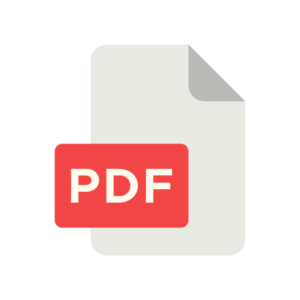
Received March 01, 2017; Accepted June 30, 2017; Published August 11, 2017
http://dx.doi.org/10.18081/2333-5106/015-05/220-231
Mark Fernandez Bedoya; Maria A. Hegeman; Marchil G. Rovere; Amanda Bron; Jimmy Fukumoto
Abstract
Human immunodeficiency virus (HIV) is still an important public health problem that emerged in the world. It is estimated that globally about 37.9 million people are living with this virus. Our country, South Africa, is one of the countries that have the most cases of people living with HIV. It is estimated that about 19% of the adult population (20-49 years) are affected by this virus. The aim of this study is to evaluate the role of IL-8 polymorphisms in HIV patients and in healthy people in South Africa. The production of IL-8 may have changed with some polymorphisms, and these changes may be responsible for the prognosis of HIV patients. If something is determined about these polymorphisms, it can be a basis for new preventive and regenerative therapies in HIV.
HIV, which is a pandemic infection-related disease, eventually causes communities to become vulnerable. This is a major problem in developing countries because they have low-income public status. Many advances have been made in the treatment of HIV, but there are still health problems because there is nothing like a complete treatment. The World Health Organization (WHO) reports that more than 25 million people have died from AIDS from 1981 to 2018. HIV/AIDS epidemiological reports state that the HIV/AIDS pandemic has affected both developing and developed countries. South Africa has the highest number of people living with HIV in the world. It is also the country with the highest number of AIDS-related deaths in the world. Most of these deaths are due to co-infections with biotic and abiotic infections and due to the pathogenesis of long-term disease progression. The role of the cytokine IL-8 has been described in many infectious and inflammatory diseases, some of which are caused by severely immunosuppressive pathogens. One IL-8 polymorphism, rs2227306, has been associated with long-term disease progression in HIV-infected individuals. The current study was aimed at determining whether the IL-8 polymorphisms had an association with HIV disease progression in South African HIV-infected individuals. Data from a pilot study was used to analyze the association of the polymorphisms with HIV viral load and CD4+ cell counts.
Keywords: Interleukin-8 (IL-8); Cytokine; HIV; Polymorphism
References
1. Kedzierska A, Maerz T, Warby et al. Granulocyte-macrophage colony-stimulating factor inhibits HIV-1 replication in monocyte-derived macrophages. AIDS 2000; 14:1739–1748. [Abstract/Full-Text]
2. Pantaleo G, Graziosi C, Fauci AS, Mechanisms of disease: the immunopathogenesis of human immunodeficiency virus infection. New England Journal of Medicine1993;328:327–335. [Abstract/Full-Text]
3. Haseltine WA. Molecular biology of the human immunodeficiency virus type 1. FASEB J 1991;5:2349-2360. [Web of Science] [Medline]
4. Bagasra O, Hauptman SP, Lischner HW, Sachs M, Pomerantz RJ. Detection of human immunodeficiency virus type 1 provirus in mononuclear cells by in situ polymerase chain reaction. N Engl J Med 1992;326:1385-1391. [Free Full Text]
5. Volberding PA, Lagakos SW, Koch MA, et al. Zidovudine in asymptomatic human immunodeficiency virus infection: a controlled trial in persons with fewer than 500 CD4-positive cells per cubic millimeter. N Engl J Med 1990;322:941-949. [Free Full Text]
6. Tindall B, Cooper DA. Primary HIV infection: host responses and intervention strategies. AIDS 1991;5:1-14. [CrossRef]
7. Schnittman SM, Psallidopoulos MC, Lane HC, et al. The reservoir for HIV-1 in human peripheral blood is a T cell that maintains expression of CD4. Science 1989;245:305-308. [CrossRef]
8. Fauci AS, Lane HC. The acquired immunodeficiency syndrome (AIDS). In: Wilson JD, Braunwald E, Isselbacher KJ, et al., eds. Harrison’s principles of internal medicine. 12th ed. Vol. 2. New York: McGraw-Hill, 1991:1402-10.
9. Nair BC, DeVico AL, Nakamura S, et al. Identification of a major growth factor for AIDS-Kaposi’s sarcoma cells as oncostatin M. Science 1992;255:1430-1432. [CrossRef]
10. Bolognesi DP. HIV antibodies and vaccine design. AIDS 1989;3:Suppl 1:S111-S118. [Web of Science]
11. Habeshaw JA, Dalgleish AG, Bountiff L, et al. AIDS pathogenesis: HIV envelope and its interaction with cell proteins. Immunol Today 1990;11:418-425. [CrossRef]
12. Amadori A, de Silvestro G, Zamarchi R, et al. CD4 epitope masking by gp120/anti-gp120 antibody complexes: a potential mechanism for CD4+ cell function down-regulation in AIDS patients. J Immunol 1992;148:2709-2716. [Web of Science]
13. Marrack P, Kushnir E, Kappler J. A maternally inherited superantigen encoded by a mammary tumour virus. Nature 1991;349:524-526. [CrossRef]
14. Acha-Orbea H, Shakov AN, Scarpellino L, et al. Clonal deletion of Vβ14-bearing T cells in mice transgenic for mammary tumour virus. Nature 1991;350:207-211. [CrossRef]
15. Rieckmann P, Poli G, Kehrl JH, Fauci AS. Activated B lymphocytes from human immunodeficiency virus-infected individuals induce virus expression in infected T cells and a promonocytic cell line, U1. J Exp Med 1991;173:1-5.
16. Brew R, Erikson JS, West DC, Kinsella AR, Slavin J, Christmas SE. Interleukin-8 as an autocrine growth factor for human colon carcinoma cells in vitro. Cytokine 2000;12:78–85. [PubMed]
17.Steinman RM. The dendritic cell system and its role in immunogenicity. Annu Rev Immunol 1991;9:271-296.
18. Doll D, Keller L. Maak M, Boulesteix A-L, Siewert JR, Holzmann B, Janssen KP. Differential expression of the chemokines GRO-2, GRO-3 and interleukin-8 in colon cancer and their impact on metastasis disease and survival. Int J Colorectal Dis 2010;25:573–581.
19. Landi S, Moreno V, Gioia-Patricola L, Guino E, Navarro M, de OJ, Capella G, Canzian F. Association of common polymorphisms in inflammatory genes interleukin (IL)6, IL8, tumor necrosis factor alpha, NFKB1, and peroxisome proliferator-activated receptor gamma with colorectal cancer. Cancer Res 2003;63:3560–3566. [PubMed]
20. Li K,Yao S, Liu S, Wang B. Mao D. Genetic polymorphisms of interleukin 8 and risk of ulcerative colitis in the Chinese population. Clin Chim Acta 2009;405:30–34. [PubMed]
21. Sameni S, Ghayumi MA, Mortazavi G, Faghih Z, Kashef MA, Ghaderi A. Lack of association between interleukin-13 gene polymorphisms (-1055 C/T and +2044 G/A) in Iranian patients with lung cancer. Mol Biol Rep 2009;36:1001–1005. [PubMed]
22. Seaton A, Scullin P, Maxwell PJ, et al. Interleukin-8 signaling promotes androgen-independent proliferation of prostate cancer cells via induction of androgen receptor expression and activation. Carcinogenesis 2008;29:1148–1156. [PubMed]


